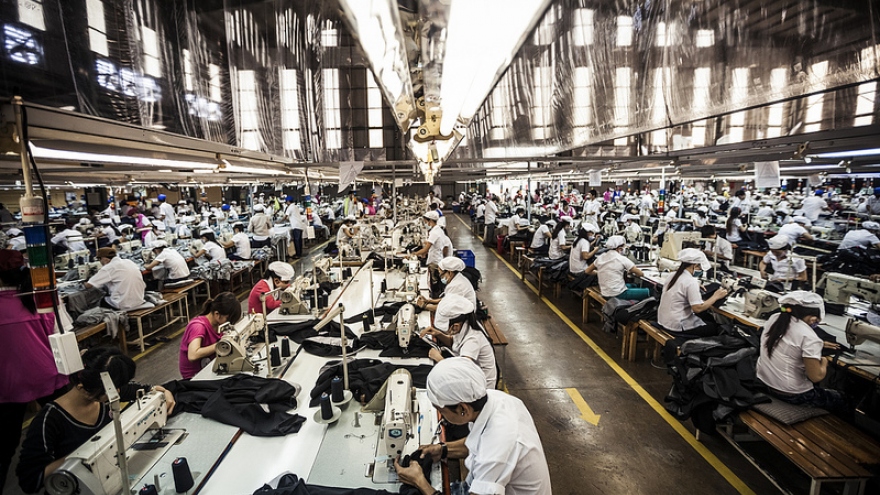“Many textile & garment companies are leaving the market because of the state’s unstable policies,” said Truong Van Cam, deputy secretary general of the Vietnam Textile and Apparel Association (Vitas) at a workshop held by the World Bank (WB) and the Vietnam Chamber of Commerce and Industry (VCCI).“A garment company wanted to import a printer to make products for export and it took the company’s owner six months to obtain the import license,” he said, citing an example to show how current policies cause difficulties for enterprises.“This was because the Decree 60 stipulated that business owners must have junior college’s degree to be able to import printers,” he said on Thoi Bao Kinh Te Saigon.A business in Nam Dinh province, which employs 2,000 workers, said it has to pay VND40-50 billion additionally every month because of the required higher minimum wage and trade union fee.
An analyst said that the government seems to be too optimistic about opportunities to be brought to the textile and garment sector by TPP.He said in 2015, Vietnam exported US$27 billion worth of textile and garment products, 60% of which went to TPP member countries. However, foreign invested enterprises (FIEs) pocketed most of the money.He went on to say that with the TPP’s strict requirements on origin of products, Vietnam would not be able to get benefits from TPP.“Vietnam imports 10% of yarn and 5.3% of cloth from TPP countries. This means that it imports most of materials needed from non-TPP countries. Meanwhile, the products with non-TPP origin won’t be able to enjoy preferential tariffs,” he explained.Pham Xuan Hong, chair of the HCMC Textile, Garment, Knitting and Embroidery Association, also said on Nguoi Lao Dong that the profits earned by Vietnamese enterprises are modest because they mostly do outsourcing for foreign partners, while 60-70% of materials needed are imports, mostly from China.A report showed that Vietnam now has 6,000 textile & garment companies, of which garment companies account for 70%. Of the number, only 17% are textile enterprises, 6% spinning, 4% dying enterprises and 3% makers of input materials and accessories.Seventy percent of enterprises now make products under the mode of cutting – assembling – trimming. This means that Vietnamese are proficient in the last phases of the production chain, but less so in dyeing and weaving.
“The State’s policies need to be designed in a way to encourage investors to do business and stay in the market,” he commented.
